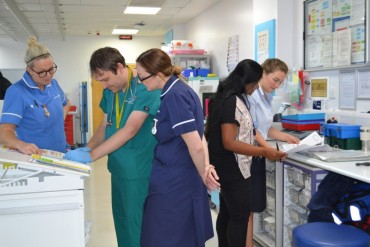Overview
A chest drain is a narrow tube that is inserted between the ribs and sits in the space between the lung and the chest wall. This space is lined on both sides by a membrane called the pleura and is known as the pleural cavity or pleural space. A chest drain is inserted when air, fluid, blood or pus has collected in the pleural space. The external end of the chest drain tube is attached to a bottle which acts as a seal to prevent anything from leaking back into the pleural space.
We are aware this PDF might not be accessible to all users. Read our accessibility statement to learn more.



